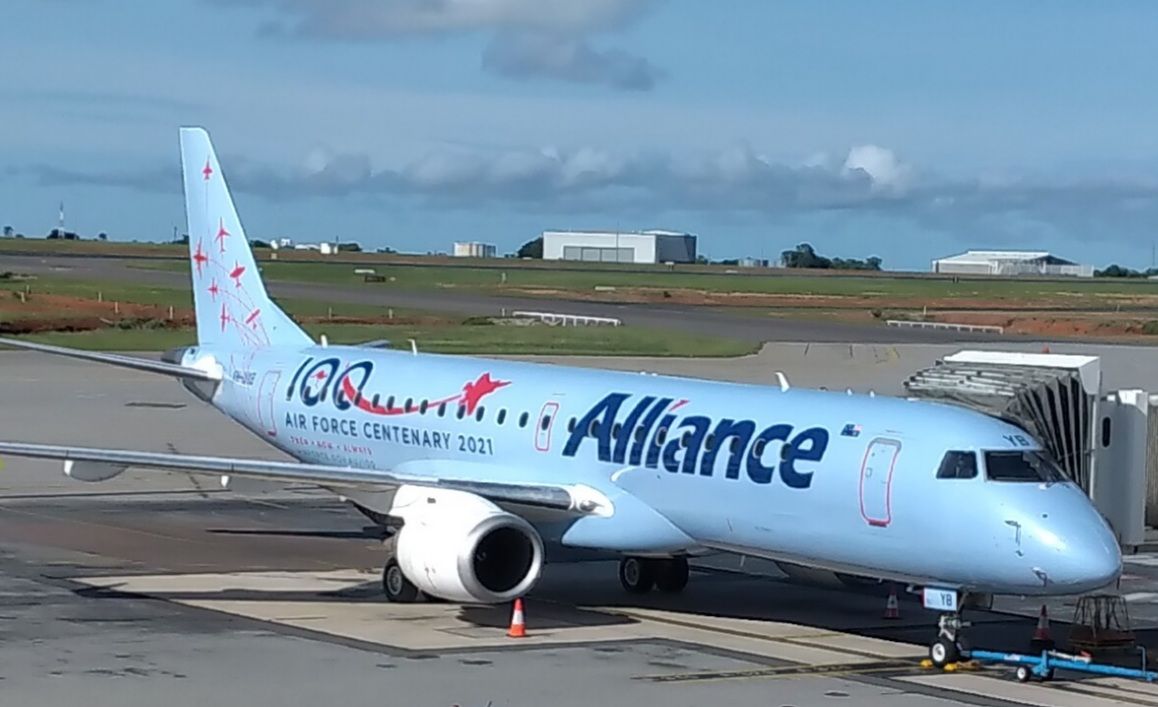Brisbane-based Alliance Airlines has recorded a statutory loss before tax of AU$7.1 million (US$5.03 million) and an underlying profit before tax of AU$45.3 million (US$32.07 million) for the 12 months to June 30, 2022, with the wet-lease and contract business performing particularly well. In a stock exchange filing on Wednesday evening, the airline said it was now transitioning from a period of investment in growth to a return on investment phase.
Alliance Airlines is a major Australian fly-in-fly-out (FIFO) and charter operator with an all-jet fleet of 57 planes and a further 13 planes scheduled to arrive by January 2023. Earlier this week, Alliance confirmed it had sold its last turboprops – five Fokker F50s, to an undisclosed customer for AU$4.6 million (US$3.26 million). Outside its Brisbane (BNE) home port, Alliance Airlines has operational bases in Townsville (TSV), Cairns (CNS), Rockhampton (ROK), Alice Springs (ASP), Darwin (DRW), Perth (PER), and Adelaide (ADL).
An Alliance Airlines E190 jet in one-off RAAF centenary livery. Photo: Andrew Curran/Simple Flying
Big boosts in wet lease and contract/FIFO revenues in FY2022
In the year ending June 30 (FY2022), total revenue from operations was AU$367.5 million (US$260.14 million), up AU$58.9 million (US$41.69 million) on the previous 12 months. During FY2022, wet lease and contract revenue grew by 61% and 20%, respectively. Alliance Airlines says the increase in wet lease revenue is due to increased aircraft utilization, increased aircraft options exercised by Qantas, and increased hours operated for Virgin Australia.
Alliance Airlines now has 18 Embraer E190 jets flying at Qantas, an arrangement that saw the number of wet lease aircraft hours flown jump from 2,262 hours in FY2021 to 16,112 hours in the FY2022. Contract/FIFO flying hours increased from 25,873 hours in FY2021 to 26,926 hours in FY2022. Five of Alliance’s top 15 clients in the resources and mining sector have contracts locked in until at least the end of FY2025. Twelve of the top 15 clients have contracts locked in until at least the end of FY23, with another under active negotiation.
Of Alliance’s top contract/FIFO customers, 22% are involved in iron ore operations, 22% in gold operations, and 15% in mixed copper/gold/uranium operations, with the remainder operating across the phosphate, oil/gas, nickel, coal, manganese, and silver/lead/zinc sectors. Alliance Airlines also operates some regular passenger transport (RPT) services, primarily in Queensland. However, RPT revenue decreased 47% in FY2022 as Alliance focused on its core contract/FIFO and wet leasing businesses.
Alliance Airlines bases and contract/FIFO flying network. Source: Alliance Airlines
Alliance Airlines invests to reap the future rewards
Growth in wet lease and contract/FIFO revenues in FY2022 outweighed decreases in RPT and charter revenues. Alliance Airlines recorded a 21% increase in net revenue in FY2022 compared to FY2021. But the airline also spent heavily in the year, including AU$68.1 million (US$48.2 million) on entry into service and associated costs of 14 Embraer E190 jets. Alliance spent another AU$9.8 million (US$6.94 million) on a new maintenance facility in Rockhampton. The airline also pumped substantial sums into pilot, cabin, and engineer recruitment and training activities.
“For Alliance to be able to service the capacity demands of all our clients in the 2023 financial year and beyond it was essential that the company continued to invest in growth during the second half of the year with full knowledge that forecast activity growth would only commence from April 2022,” said Alliance Airlines Managing Director Scott McMillan.
Alliance Airlines is maintaining a positive outlook. In the short to medium term, the airline says it is focusing on pilot recruitment, non-monetary retention incentives, an uptick in training, and simplifying the business. The last part involves the sale of the Fokker F50s and reducing the amount of RPT flying to concentrate on the E190 fleet introduction and “robust” contract and charter flying.





